Plate-loading test
Table of contents
1. Static plate-loading test
In the plate-loading test, the soil in the field is repeatedly loaded and unloaded in stages by a circular load plate using a compression device. Pressure-settlement lines are determined for the soil in place to determine the deformability and bearing capacity of this soil under a surface load. From these pressure-settlement lines, the deformation moduli Ev1 (initial loading) and Ev2 (reloading) and the subgrade reaction modulus ks can be identified.
The plate-loading test is carried out in the sense of a quality test with regard to the bearing capacity of natural or inbuilt soils to determine the basis for the calculation of foundations.
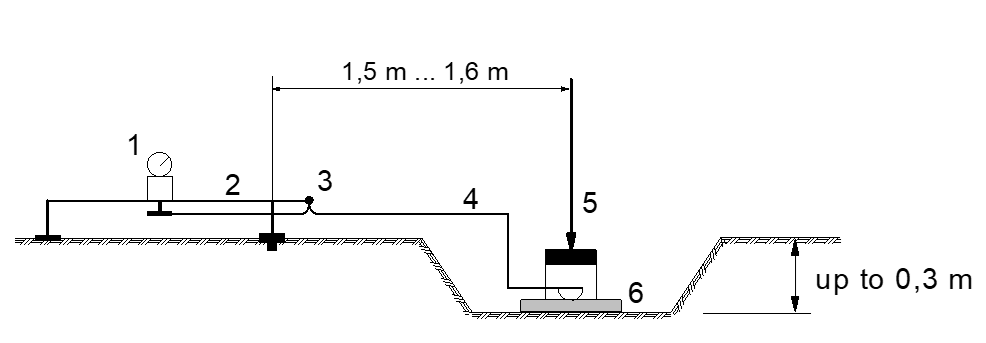
With the aid of a load plate, the soil is repeatedly loaded and unloaded in stages. The mean normal stresses σ0 under the plate and the associated settlements s of the individual load steps are plotted in a diagram as a pressure-settlement line. As a rule, a plate with a diameter of d = 30 cm is used. After a preload of approx. 10 kN/m², equal load steps of 0.08 MN/m² are applied at approx. 2-minute intervals until the maximum load of 0.5 MN/m² is reached. Then the plate is again relieved, in steps of -50%, -25% and 0% of the maximum load. Then a second load cycle is applied in the same load steps, but only up to the maximum load of 0.45 MN/m².
The deformation modulus Ev1 (initial load) resulting from this load-settlement line represents a quantity for assessing the compaction work performed on a soil placed. The deformation modulus Ev2 (reloading) is used to assess the deformability or bearing capacity of the soil.
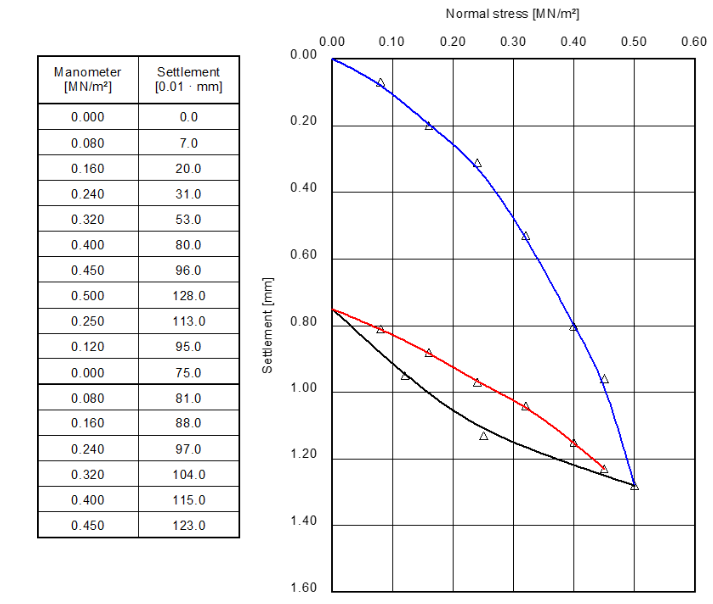
The value of the deformation moduli is determined from the pressure-settlement line of the initial or reload from the secant between the points 0.3 σ0.max and 0.7 σ0.max according to the following equation:

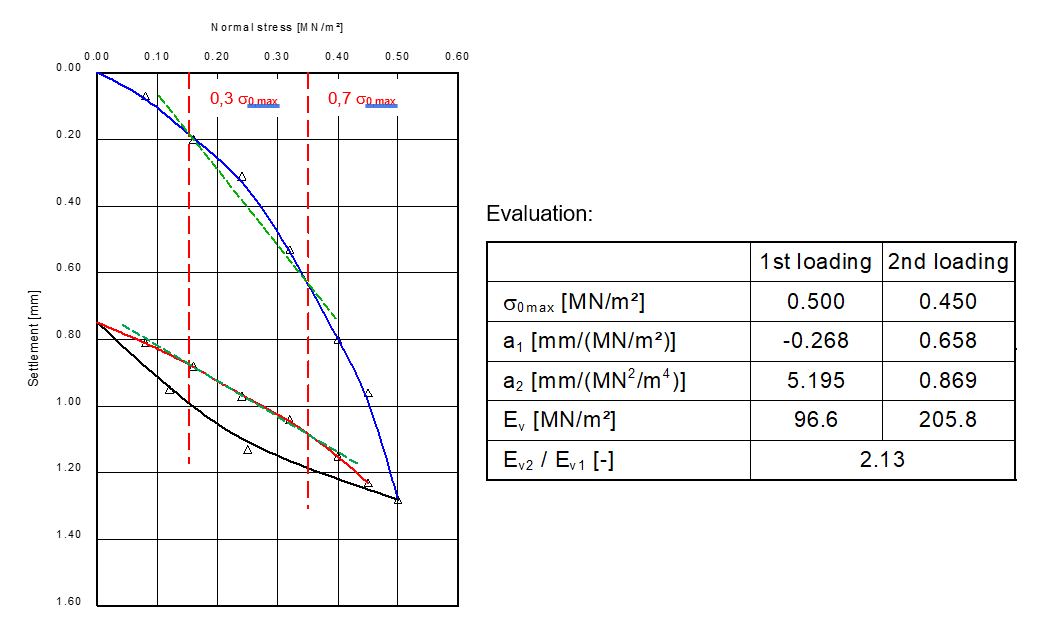
For the given coarse-grained soils, the assignment of the degree of compaction Dpr, deformation modulus Ev2 can be given approximately (cf. ZTVE-StB 17):
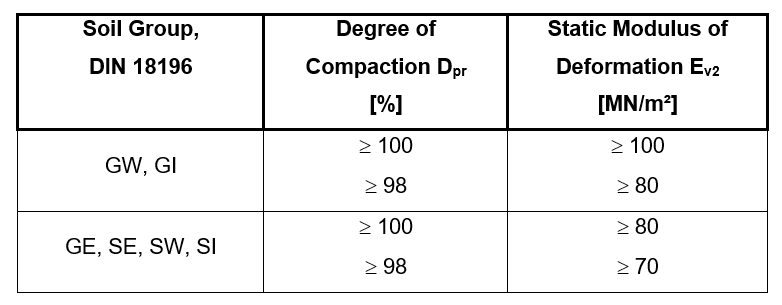
In addition, the ratio value of the deformation modulus Ev2/Ev1 must be used to assess the compaction condition. Ev2/Ev1 ≤ 2.3 applies for Dpr ≥ 100 % and Ev2/Ev1 ≤ 2.5 for Dpr ≥ 98 %. If the Ev1 value already reaches 60 % of the value given in the table, higher Ev2/Ev1 ratios are also permissible.
The modulus of subgrade reaction ks can be determined directly from the measured quantities from the load curve of the pressure settlement line:

Attention: the modulus of subgrade reaction is not a soil constant, it depends on the foundation geometries, the soil properties and the boundary conditions of the foundation body! (cf. the glossary entry “Calculation of settlements in geotechnics”)
2. Dynamic plate-loading test
The dynamic plate-loading test is used to check the bearing capacity and compaction of soils whose correlative relationships are known with sufficient accuracy. The test depth is about 30 cm. The dynamic deformation modulus Evd can be calculated with

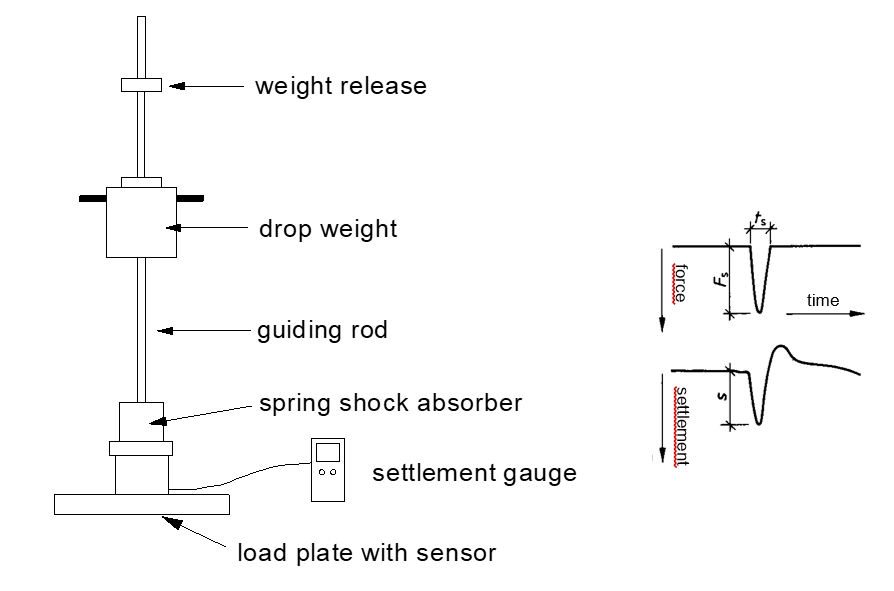
As an approximation, an assignment of degrees of compaction Dpr, deformation modulus Ev2 and the dynamic deformation modulus Evd as a function of the soil is given in different literature:
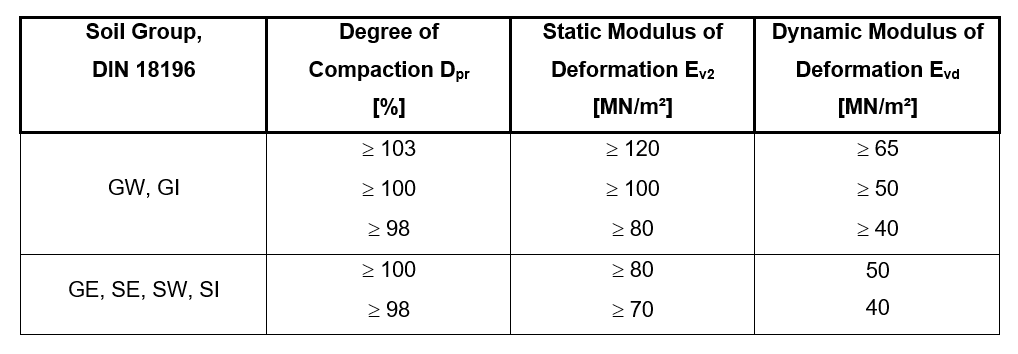
3. Example of evaluation of a static plate-loading test
The following test results are entered in the GGU-PLATELOAD program in the "Edit - Test" menu using the "Edit first test" and "Edit second test" buttons:
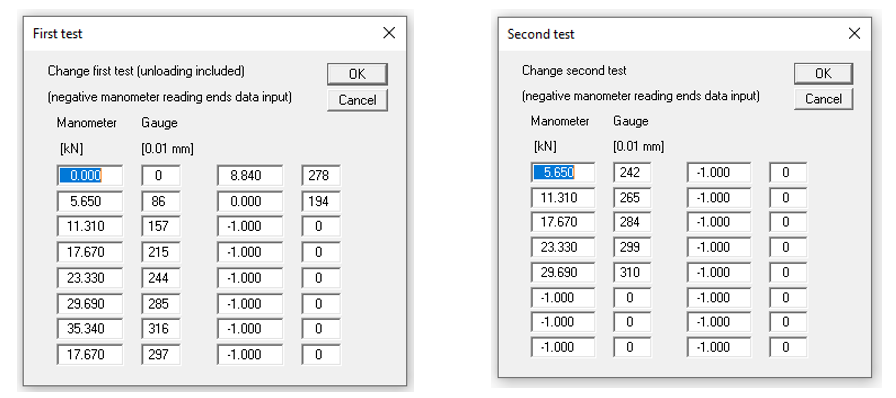
On the screen, the evaluation (Ev1, Ev2, Ev2/Ev1) is then displayed as follows:
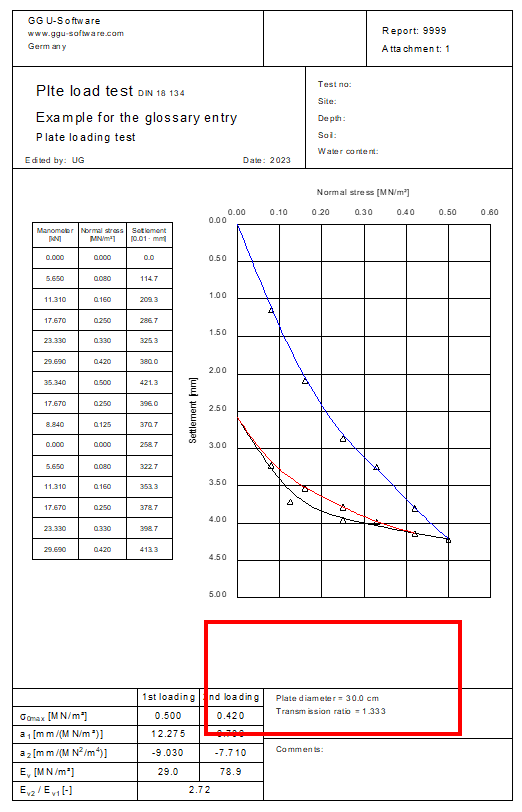
Notes on use
All texts, images and media listed here are subject to copyright and are the intellectual property of Civilserve GmbH. Use is only permitted with appropriate reference and a link to this source.